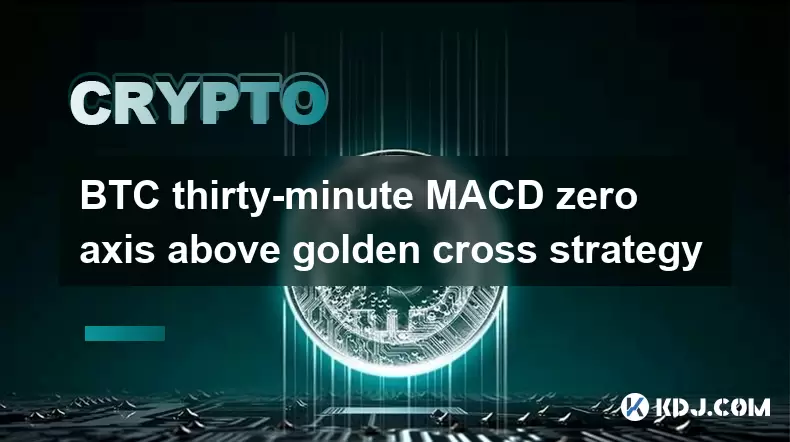-
 Bitcoin
Bitcoin $116400
-0.36% -
 Ethereum
Ethereum $4033
3.40% -
 XRP
XRP $3.302
-1.26% -
 Tether USDt
Tether USDt $1.000
-0.02% -
 BNB
BNB $796.1
1.67% -
 Solana
Solana $177.8
1.89% -
 USDC
USDC $0.9999
0.00% -
 Dogecoin
Dogecoin $0.2314
4.09% -
 TRON
TRON $0.3381
0.14% -
 Cardano
Cardano $0.7989
1.22% -
 Stellar
Stellar $0.4496
-1.84% -
 Chainlink
Chainlink $20.42
9.42% -
 Hyperliquid
Hyperliquid $41.17
0.88% -
 Sui
Sui $3.914
3.77% -
 Bitcoin Cash
Bitcoin Cash $584.7
1.52% -
 Hedera
Hedera $0.2632
-0.54% -
 Avalanche
Avalanche $24.09
3.40% -
 Ethena USDe
Ethena USDe $1.001
-0.02% -
 Litecoin
Litecoin $123.2
1.33% -
 Toncoin
Toncoin $3.318
-0.04% -
 UNUS SED LEO
UNUS SED LEO $8.984
-0.05% -
 Shiba Inu
Shiba Inu $0.00001323
2.85% -
 Uniswap
Uniswap $10.90
4.41% -
 Polkadot
Polkadot $3.999
3.34% -
 Dai
Dai $1.000
0.01% -
 Cronos
Cronos $0.1630
9.64% -
 Bitget Token
Bitget Token $4.484
0.82% -
 Monero
Monero $272.4
2.44% -
 Pepe
Pepe $0.00001173
6.03% -
 Aave
Aave $290.8
2.88%
BTC thirty-minute MACD zero axis above golden cross strategy
The thirty-minute MACD zero axis above golden cross strategy signals a bullish BTC trend when the MACD line crosses above the signal line, both above zero.
Jun 02, 2025 at 09:56 pm

Introduction to the Thirty-Minute MACD Zero Axis Above Golden Cross Strategy for BTC
The Moving Average Convergence Divergence (MACD) indicator is a widely used tool in the cryptocurrency trading community, particularly for analyzing Bitcoin (BTC) price movements. The thirty-minute MACD zero axis above golden cross strategy is a specific approach that traders employ to identify potential bullish trends in BTC. This strategy focuses on the MACD line crossing above the signal line while both are above the zero axis on a thirty-minute chart. Understanding this strategy can help traders make informed decisions about entering and exiting positions.
Understanding the MACD Indicator
Before diving into the specifics of the strategy, it's essential to understand the basics of the MACD indicator. The MACD consists of two lines: the MACD line and the signal line. The MACD line is calculated by subtracting the 26-period Exponential Moving Average (EMA) from the 12-period EMA. The signal line is typically a 9-period EMA of the MACD line. The zero axis, also known as the centerline, separates positive and negative values on the MACD chart. A golden cross occurs when the MACD line crosses above the signal line, signaling potential bullish momentum.
Setting Up the Thirty-Minute Chart
To implement the thirty-minute MACD zero axis above golden cross strategy, traders need to set up their charts correctly. Here are the steps to follow:
- Open your trading platform and select Bitcoin (BTC) as the asset you want to analyze.
- Switch to the thirty-minute timeframe on your chart.
- Add the MACD indicator to your chart. Ensure that the settings are standard: 12, 26, and 9 periods for the MACD line, signal line, and histogram, respectively.
Once the chart is set up, traders can start monitoring for the golden cross above the zero axis.
Identifying the Golden Cross Above the Zero Axis
The key to the thirty-minute MACD zero axis above golden cross strategy is to identify when the MACD line crosses above the signal line while both are positioned above the zero axis. Here's how to spot this event:
- Monitor the MACD line and signal line on your thirty-minute BTC chart.
- Look for the MACD line to cross above the signal line.
- Ensure that both the MACD line and the signal line are above the zero axis when the cross occurs.
This event signals that the short-term momentum is outpacing the longer-term momentum, potentially indicating a bullish trend.
Entry and Exit Points Based on the Strategy
Once the golden cross above the zero axis is identified, traders need to determine their entry and exit points. Here's how to proceed:
- Entry Point: When the MACD line crosses above the signal line while both are above the zero axis, this is the signal to enter a long position. Consider entering the trade at the next candle's open after the golden cross.
- Exit Point: There are several ways to determine an exit point. One common method is to exit the trade when the MACD line crosses below the signal line, signaling a potential reversal. Another approach is to set a target price based on technical analysis or use a trailing stop-loss to maximize gains.
Risk Management and Strategy Considerations
Effective risk management is crucial when implementing the thirty-minute MACD zero axis above golden cross strategy. Here are some considerations:
- Position Sizing: Determine the size of your position based on your risk tolerance and account size. Never risk more than a small percentage of your trading capital on a single trade.
- Stop-Loss Orders: Always set a stop-loss order to limit potential losses. Place the stop-loss below the recent swing low or at a predetermined percentage of your entry price.
- Divergence: Pay attention to potential divergences between the MACD and the price action. If the price is making higher highs while the MACD is making lower highs, this could indicate weakening momentum and a potential reversal.
Practical Example of the Strategy in Action
To illustrate how the thirty-minute MACD zero axis above golden cross strategy works, let's consider a hypothetical example:
- Assume the BTC thirty-minute chart shows the MACD line at 0.5 and the signal line at 0.3, both above the zero axis.
- The next candle shows the MACD line crossing above the signal line, with the MACD line at 0.6 and the signal line at 0.4.
- Based on the strategy, you decide to enter a long position at the open of the next candle, which is at $30,000.
- You set a stop-loss at $29,500, just below the recent swing low, and a target price at $31,000 based on technical analysis.
- The price moves in your favor and reaches $31,000, at which point you exit the trade for a profit.
This example demonstrates how the strategy can be applied in real-time trading scenarios.
Frequently Asked Questions
Q: Can this strategy be used on other timeframes or assets?
A: While the thirty-minute MACD zero axis above golden cross strategy is specifically designed for BTC on a thirty-minute chart, it can be adapted for other timeframes and assets. However, the effectiveness of the strategy may vary depending on the volatility and market conditions of the asset being traded.
Q: How does the MACD histogram play a role in this strategy?
A: The MACD histogram, which represents the difference between the MACD line and the signal line, can provide additional insights into momentum. A rising histogram above the zero axis can confirm bullish momentum, while a falling histogram may indicate weakening momentum. Traders can use the histogram as a secondary confirmation tool when implementing the strategy.
Q: Is it necessary to use other indicators alongside the MACD for this strategy?
A: While the MACD alone can be effective, using additional indicators such as the Relative Strength Index (RSI) or Bollinger Bands can provide further confirmation and help manage risk. For example, an overbought RSI reading might suggest caution despite a bullish MACD signal.
Q: How does market volatility affect the performance of this strategy?
A: Market volatility can significantly impact the performance of the thirty-minute MACD zero axis above golden cross strategy. In highly volatile markets, false signals may be more common, necessitating stricter risk management and possibly shorter timeframes for confirmation. Conversely, in less volatile markets, the strategy may yield more reliable signals, but the potential for large price movements may be reduced.
Disclaimer:info@kdj.com
The information provided is not trading advice. kdj.com does not assume any responsibility for any investments made based on the information provided in this article. Cryptocurrencies are highly volatile and it is highly recommended that you invest with caution after thorough research!
If you believe that the content used on this website infringes your copyright, please contact us immediately (info@kdj.com) and we will delete it promptly.
- Decentralized Data: Taking the Driver's Seat in the Data Economy
- 2025-08-09 14:30:11
- Bitcoin vs. Gold: The Store-of-Value Showdown in the Digital Age
- 2025-08-09 14:30:11
- BlockDAG, Stellar, and Crypto Adoption: Navigating the Hype
- 2025-08-09 14:50:12
- Litecoin Price Surge: Riding the Wave of Institutional Interest and ETF Hopes
- 2025-08-09 14:50:12
- Chainlink's Wild Ride: Whales Are Still Loading Up on LINK!
- 2025-08-09 15:10:11
- Ruvi AI: Solana's New Challenger Dominating Token Sales with AI Innovation
- 2025-08-09 14:55:15
Related knowledge

Can the Bitcoin protocol be changed?
Aug 07,2025 at 01:16pm
Understanding the Bitcoin ProtocolThe Bitcoin protocol is the foundational set of rules that govern how the Bitcoin network operates. It defines every...

What happens to Bitcoin transactions once they are confirmed?
Aug 09,2025 at 05:22am
Understanding Bitcoin Transaction ConfirmationWhen a Bitcoin transaction is initiated, it is broadcast to the network and placed in a pool of unconfir...

How are Bitcoin transactions verified?
Aug 08,2025 at 06:57am
Understanding Bitcoin Transaction VerificationBitcoin transactions are verified through a decentralized network of nodes and miners that ensure the le...

How does decentralization make Bitcoin secure?
Aug 08,2025 at 09:35am
Understanding Decentralization in BitcoinDecentralization is a foundational principle of Bitcoin's architecture and plays a critical role in its secur...

What are some common misconceptions about Bitcoin?
Aug 07,2025 at 07:22pm
Bitcoin is Just Like Regular MoneyA widespread misconception is that Bitcoin functions identically to traditional fiat currencies like the US dollar o...

What is the role of nodes in the Bitcoin network?
Aug 08,2025 at 04:14pm
Understanding the Function of Nodes in the Bitcoin NetworkNodes are fundamental components of the Bitcoin network, serving as the backbone that ensure...

Can the Bitcoin protocol be changed?
Aug 07,2025 at 01:16pm
Understanding the Bitcoin ProtocolThe Bitcoin protocol is the foundational set of rules that govern how the Bitcoin network operates. It defines every...

What happens to Bitcoin transactions once they are confirmed?
Aug 09,2025 at 05:22am
Understanding Bitcoin Transaction ConfirmationWhen a Bitcoin transaction is initiated, it is broadcast to the network and placed in a pool of unconfir...

How are Bitcoin transactions verified?
Aug 08,2025 at 06:57am
Understanding Bitcoin Transaction VerificationBitcoin transactions are verified through a decentralized network of nodes and miners that ensure the le...

How does decentralization make Bitcoin secure?
Aug 08,2025 at 09:35am
Understanding Decentralization in BitcoinDecentralization is a foundational principle of Bitcoin's architecture and plays a critical role in its secur...

What are some common misconceptions about Bitcoin?
Aug 07,2025 at 07:22pm
Bitcoin is Just Like Regular MoneyA widespread misconception is that Bitcoin functions identically to traditional fiat currencies like the US dollar o...

What is the role of nodes in the Bitcoin network?
Aug 08,2025 at 04:14pm
Understanding the Function of Nodes in the Bitcoin NetworkNodes are fundamental components of the Bitcoin network, serving as the backbone that ensure...
See all articles

























































































